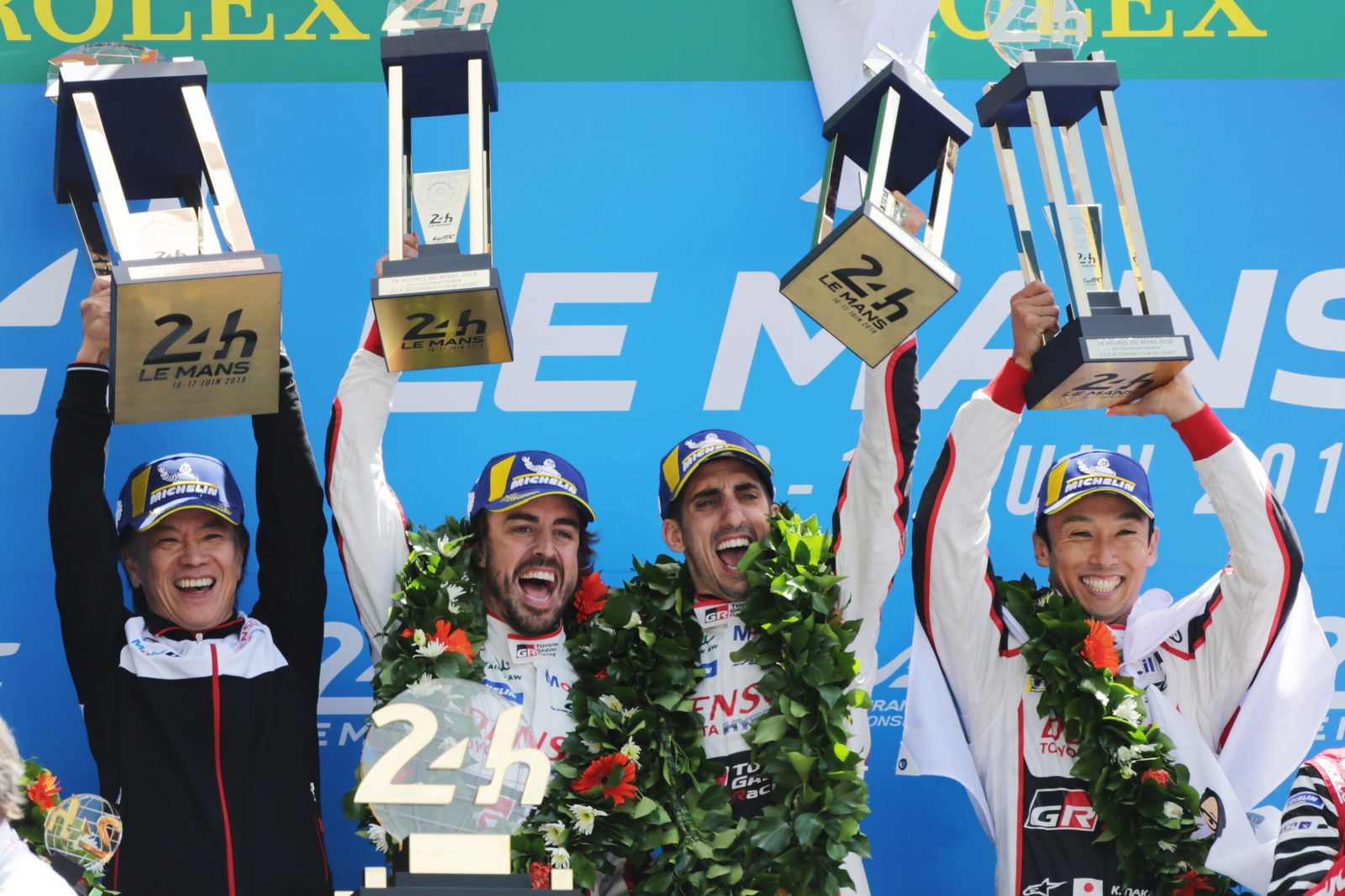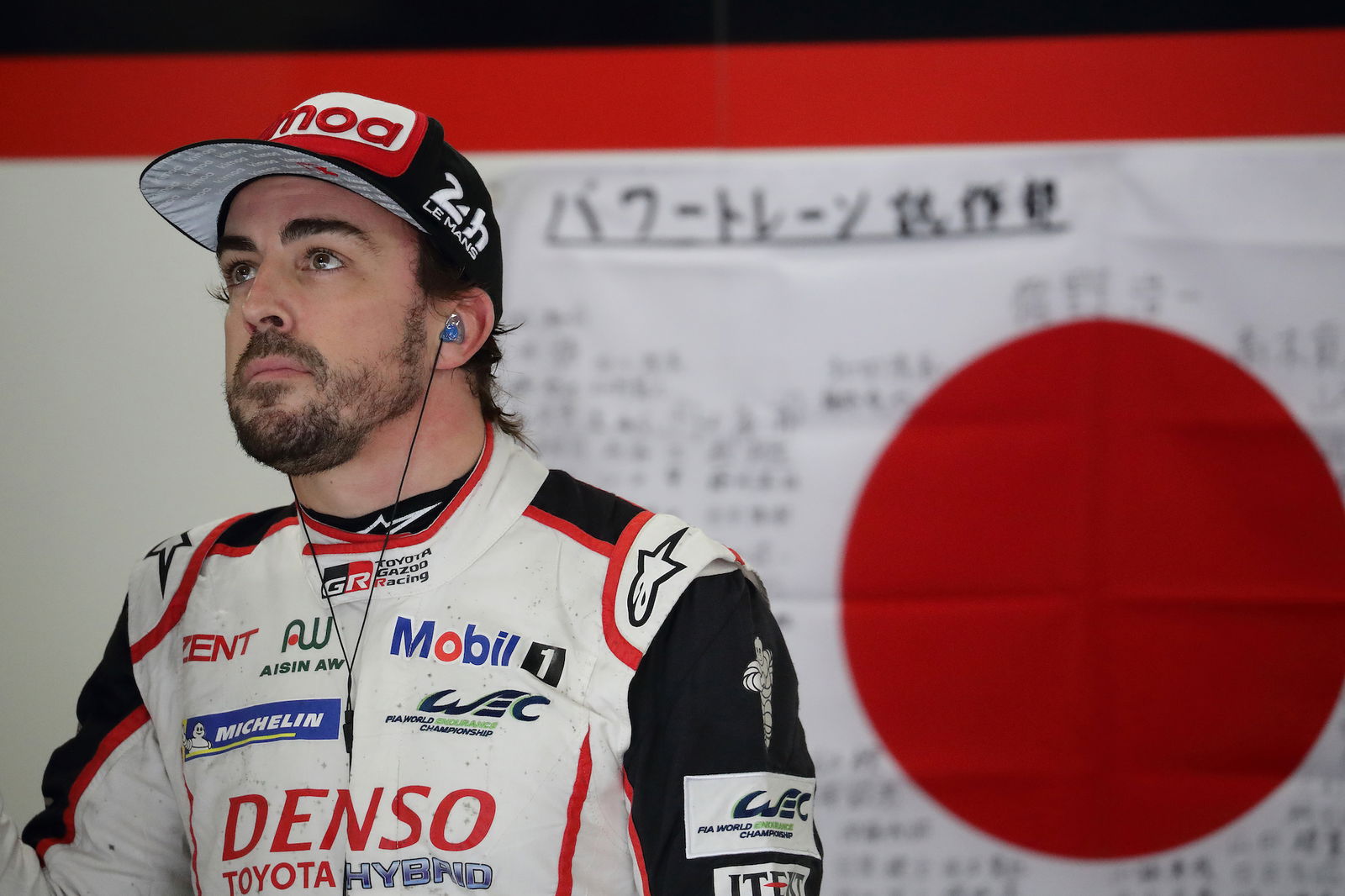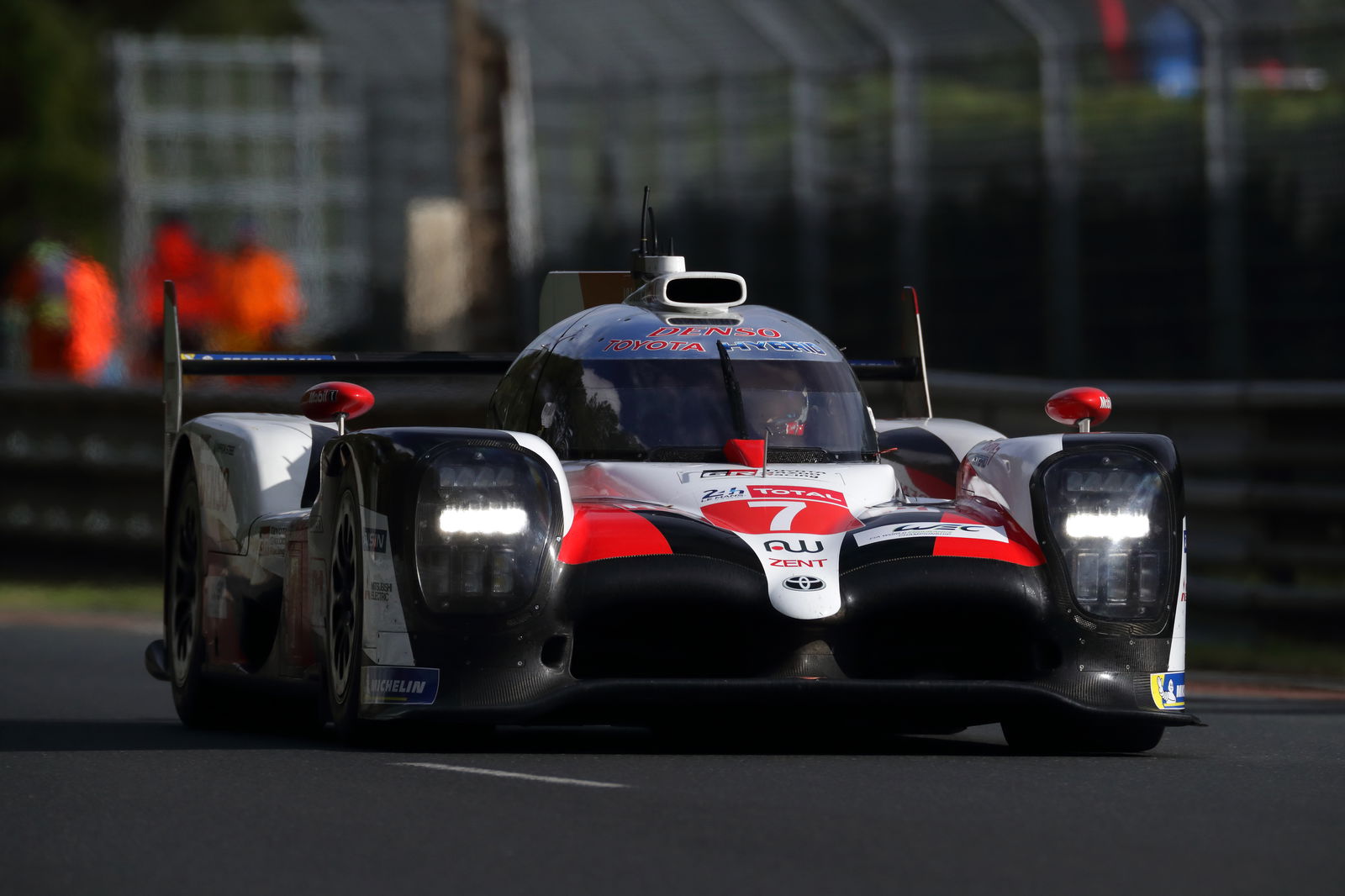How will Fernando Alonso’s WEC and Le Mans adventure be remembered?
Fernando Alonso will draw the curtain on his time in the FIA World Endurance Championship this weekend when he makes his second appearance at the 24 Hours of Le Mans with his sights set on a drivers’ title victory.
Alonso balanced racing for Toyota in the WEC with his McLaren Formula 1 commitments through 2018, with the sports car series becoming his primary program after his final grand prix start in Abu Dhabi last November.

Fernando Alonso will draw the curtain on his time in the FIA World Endurance Championship this weekend when he makes his second appearance at the 24 Hours of Le Mans with his sights set on a drivers’ title victory.
Alonso balanced racing for Toyota in the WEC with his McLaren Formula 1 commitments through 2018, with the sports car series becoming his primary program after his final grand prix start in Abu Dhabi last November.
While it has brought him great success on-track, most importantly allowing him to tick off the second leg of his ‘triple crown’ with Le Mans victory last year, it has also seen him develop greatly as a driver. It’s helped in his bid to become the most complete racing driver in the world, as well as offering a change of pace he has appreciated, evidenced by his intention to return to the championship in the future.
But how will Alonso’s time at Le Mans and the WEC be remembered?
Alonso’s arrival came at a time when the series badly needed a shot in the arm, bringing it some real star power.
Following the shock exit of Porsche from LMP1 at the end of the 2017 season, just 12 months after Audi had made the same decision to close its program, Toyota was left as the sole manufacturer racing in the premier class of sports car racing.
The knock-on effect of Porsche’s decision to quit was the formation of a 13-month ‘super season’ across 2018 and 2019, which, while achieving the long-held objective of ending the season with the 24 Hours of Le Mans, was really about damage limitation for the series.
The prospect of seeing Toyota fighting only itself at the front of the pack was concerning, but the arrival of Alonso to its line-up helped stir up plenty of fresh interest in the WEC and Le Mans. Similar to Nico Hulkenberg’s brief foray in 2015 with Porsche, it gave a direct F1 link for fans not accustom with the championship to make.
While the novelty of Alonso racing in the WEC has certainly worn off as the season has gone on, his arrival could not have been timed better for the championship as it looked to attract new fans and offer fresh storylines at a time when the outlook was bleak.
The more regular fans of sports car racing were eager to see just how Alonso would stack up against an experienced field in the WEC. With five other drivers sharing duties across the two Toyota TS050 Hybrids, and with the rapid duo of Sebastien Buemi and Kazuki Nakajima sharing the very same car with him, there would be nowhere for the Spaniard to hide.
But Alonso took to the category with ease. Despite a couple of nervy moments on debut at Spa, he quickly found his stride, with his devastating night stint at Le Mans proving crucial in sending the #8 Toyota to victory.

Alonso’s form throughout the WEC season has been highly impressive. Sure, it may just be a two-car fight at the front, but Alonso, Nakajima and Buemi have been a cut above the #7 crew throughout the campaign, winning four races. (They also won at Silverstone prior to being disqualified.)
The success in sports cars has not been limited to WEC, though. Alonso played an integral role in Wayne Taylor Racing’s victory in the Rolex 24 at Daytona, starring in wet conditions to give the team a late edge ahead of a red flag.
Most drivers have at least some period of adjustment when they make the move into prototypes. But Alonso took to it with such ease that he quickly became a potent weapon in Toyota’s armoury.
While the odds of Alonso winning on Sunday are hard to peg given Le Mans’ reputation for the unexpected and the fierce challenge from the #7 Toyota, he is highly likely to come away with the WEC drivers’ title secured alongside Buemi and Nakajima. The trio needs only a top-seven finish to clinch the crown, which will be Toyota’s first in five years.
It would also be Alonso’s third world title following his brace of F1 crowns - imagine saying back in 2006 that his next world championship win would come for Toyota and in sports car racing!
We all know why that drought has lasted so long, with much of the difficulties being laid with Alonso himself due to deteriorating relationships and various missteps.
Things with Toyota have certainly been cordial, otherwise it would not have entertained the idea of continuing its relationship with Alonso beyond WEC, with a Dakar Rally entry on the cards.
However, much of the early ebullience about Alonso’s arrival at the team in Spring 2018 had worn off by the end of the year. There’s a feeling that the start of the 2019-20 season at Silverstone in September will offer a reset, with Brendon Hartley – an LMP1 star with Porsche in the past before his year in F1 at Toro Rosso – coming in to replace the Spaniard. From then, there won’t be the same kind of spotlight on one part of the team, or any of the complications and stresses that come with that.

Asked about Alonso’s impact, Toyota LMP1 technical director Pascal Vasselon said that while he had been “extremely good”, no major shift had taken place as a result of his arrival.
“He has been improving, he started quite good and has been gradually improving. He has been impressive as a driver,” Vasselon said.
“But did he change the team? No. It is an endurance team with six drivers and 60 people around. Fernando did very well, but he has not transformed the team.”
In the wider WEC paddock, Alonso has ruffled a number of feathers. After his win at Le Mans last year, he declared it was “on a higher level than any other victory at Le Mans”, his main evidence being the 10-car LMP1 class he went up against. But the eight non-Toyota cars all ran without hybrid systems and had a stint-length disadvantage, meaning there was never any real competition on-track. The leading privateer car – Rebellion Racing’s #3 R13 Gibson – finished 12 laps behind the race-winning Toyota, losing half a lap every hour.
The comment may have been a classic example of Alonso spin, but it left a bad taste in the mouth of many in the WEC. He kept to his guns, though, saying as late as October that the LMP1 privateers were as quick as Toyota - something ex-Audi and Porsche LMP1 driver Andre Lotterer, now with Rebellion, said was the “joke of the year.” And privately, drivers have been far more vocal and critical about their views on the matter.
While Alonso appears to have cooled that thinking somewhat, saying on Wednesday that in a normal race Toyota “should be first and second”, it’s too late for many who saw his previous comments as either a show of ignorance or complete disrespect. Few drivers in the top classes will be sad to see the back of him as a result.
Alonso’s stint in sports cars has been impressive, and certainly an interesting chapter. But life will go on for the WEC and the 24 Hours of Le Mans after this weekend - and for many, it will be a welcome return to normality.


